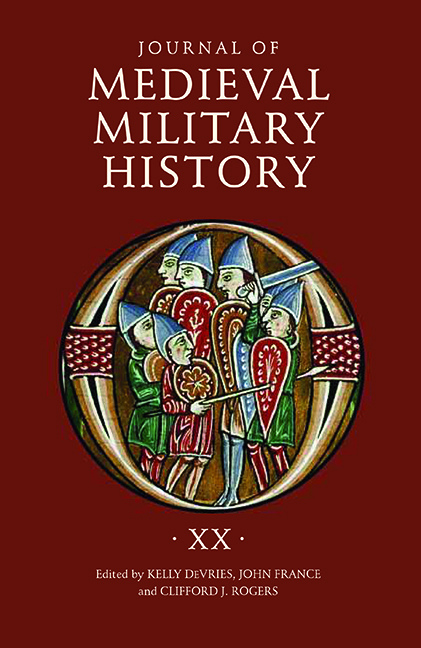710 results
416 MRI Findings in Preterm Infants Associated with Strabismus
- Part of
-
- Journal:
- Journal of Clinical and Translational Science / Volume 8 / Issue s1 / April 2024
- Published online by Cambridge University Press:
- 03 April 2024, p. 124
-
- Article
-
- You have access
- Open access
- Export citation
Comparing MICADAS Gas Source, Direct Carbonate, and Standard Graphite 14C Determinations of Biogenic Carbonate
-
- Journal:
- Radiocarbon / Volume 66 / Issue 2 / April 2024
- Published online by Cambridge University Press:
- 29 April 2024, pp. 295-305
- Print publication:
- April 2024
-
- Article
- Export citation
The Effect of Surface Modification by an Organosilane on the Electrochemical Properties of Kaolinite
-
- Journal:
- Clays and Clay Minerals / Volume 42 / Issue 2 / April 1994
- Published online by Cambridge University Press:
- 28 February 2024, pp. 123-136
-
- Article
- Export citation
Evidence for Low-Grade Metamorphism, Hydrothermal Alteration, and Diagenesis on Mars from Phyllosilicate Mineral Assemblages
-
- Journal:
- Clays and Clay Minerals / Volume 59 / Issue 4 / August 2011
- Published online by Cambridge University Press:
- 01 January 2024, pp. 359-377
-
- Article
- Export citation
The genesis of calcite and dolomite carbonatite-forming magma by liquid immiscibility: a critical appraisal
-
- Journal:
- Geological Magazine / Volume 160 / Issue 8 / August 2023
- Published online by Cambridge University Press:
- 15 September 2023, pp. 1463-1480
-
- Article
-
- You have access
- Open access
- HTML
- Export citation
Agricultural Research Service Weed Science Research: Past, Present, and Future
-
- Journal:
- Weed Science / Volume 71 / Issue 4 / July 2023
- Published online by Cambridge University Press:
- 16 August 2023, pp. 312-327
-
- Article
-
- You have access
- Open access
- HTML
- Export citation
The Parkes Pulsar Timing Array third data release
-
- Journal:
- Publications of the Astronomical Society of Australia / Volume 40 / 2023
- Published online by Cambridge University Press:
- 19 July 2023, e049
-
- Article
-
- You have access
- Open access
- HTML
- Export citation
Journal of Medieval Military History 1477-545X
-
- Book:
- Journal of Medieval Military History XXI
- Published by:
- Boydell & Brewer
- Published online:
- 10 January 2024
- Print publication:
- 06 June 2023, pp 261-265
-
- Chapter
- Export citation
List of Illustrations
-
- Book:
- Journal of Medieval Military History XXI
- Published by:
- Boydell & Brewer
- Published online:
- 10 January 2024
- Print publication:
- 06 June 2023, pp vii-x
-
- Chapter
- Export citation
List of Contributors
-
- Book:
- Journal of Medieval Military History XXI
- Published by:
- Boydell & Brewer
- Published online:
- 10 January 2024
- Print publication:
- 06 June 2023, pp 259-260
-
- Chapter
- Export citation

Journal of Medieval Military History XXI
-
- Published by:
- Boydell & Brewer
- Published online:
- 10 January 2024
- Print publication:
- 06 June 2023
Frontmatter
-
- Book:
- Journal of Medieval Military History XXI
- Published by:
- Boydell & Brewer
- Published online:
- 10 January 2024
- Print publication:
- 06 June 2023, pp i-iv
-
- Chapter
- Export citation
Contents
-
- Book:
- Journal of Medieval Military History XXI
- Published by:
- Boydell & Brewer
- Published online:
- 10 January 2024
- Print publication:
- 06 June 2023, pp v-vi
-
- Chapter
- Export citation
Effect of Lumateperone (ITI-007) on Quality of Life and Functional Disability in the Treatment of Bipolar Depression
-
- Journal:
- CNS Spectrums / Volume 28 / Issue 2 / April 2023
- Published online by Cambridge University Press:
- 14 April 2023, p. 238
-
- Article
-
- You have access
- Export citation
Cardiovascular and renal profiles in rat offspring that do not undergo catch-up growth after exposure to maternal protein restriction
-
- Journal:
- Journal of Developmental Origins of Health and Disease / Volume 14 / Issue 3 / June 2023
- Published online by Cambridge University Press:
- 17 January 2023, pp. 426-436
-
- Article
-
- You have access
- Open access
- HTML
- Export citation
Structural racism in healthcare and research: A community-led model of curriculum development and implementation
-
- Journal:
- Journal of Clinical and Translational Science / Volume 7 / Issue 1 / 2023
- Published online by Cambridge University Press:
- 09 November 2022, e18
-
- Article
-
- You have access
- Open access
- HTML
- Export citation
Has the COVID-19 pandemic influenced suicide rates differentially according to socioeconomic indices and ethnicity? More evidence is needed globally
-
- Journal:
- Epidemiology and Psychiatric Sciences / Volume 31 / 2022
- Published online by Cambridge University Press:
- 11 October 2022, e72
-
- Article
-
- You have access
- Open access
- HTML
- Export citation
The impact of the COVID-19 pandemic on presentations to health services following self-harm: systematic review
-
- Journal:
- The British Journal of Psychiatry / Volume 221 / Issue 4 / October 2022
- Published online by Cambridge University Press:
- 11 July 2022, pp. 603-612
- Print publication:
- October 2022
-
- Article
-
- You have access
- Open access
- HTML
- Export citation
List of Contributors
-
- Book:
- Journal of Medieval Military History
- Published by:
- Boydell & Brewer
- Published online:
- 07 October 2022
- Print publication:
- 17 June 2022, pp 233-234
-
- Chapter
- Export citation

Journal of Medieval Military History
-
- Published by:
- Boydell & Brewer
- Published online:
- 07 October 2022
- Print publication:
- 17 June 2022




